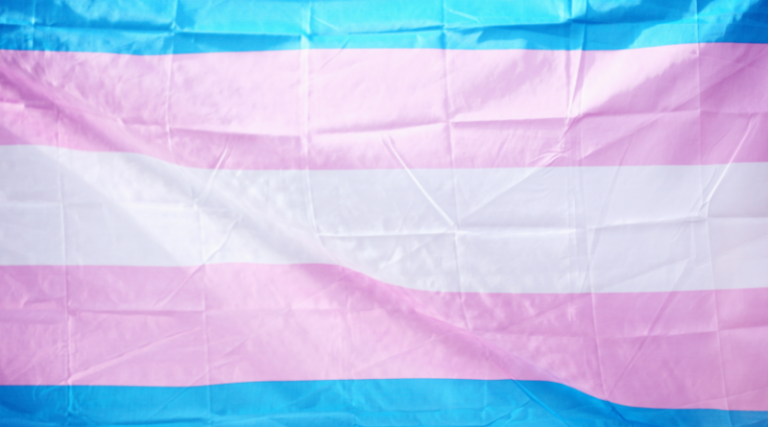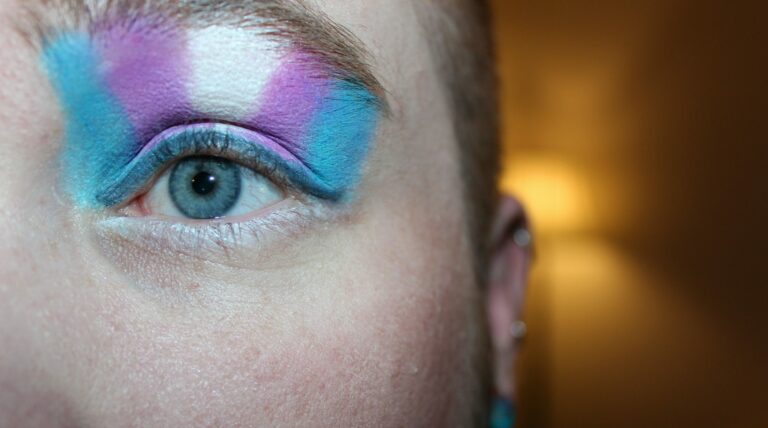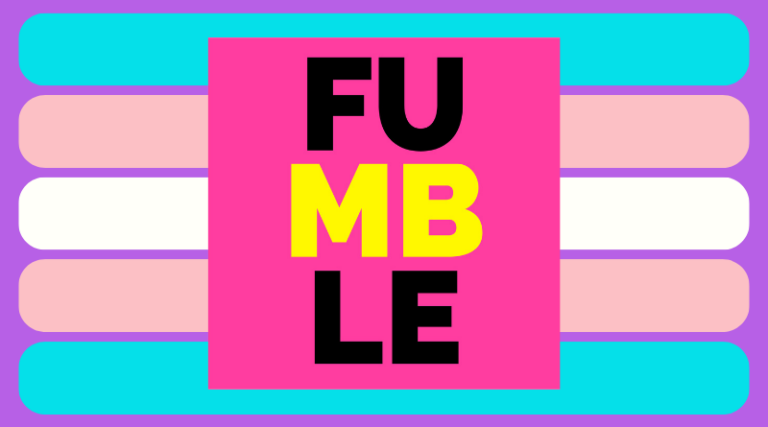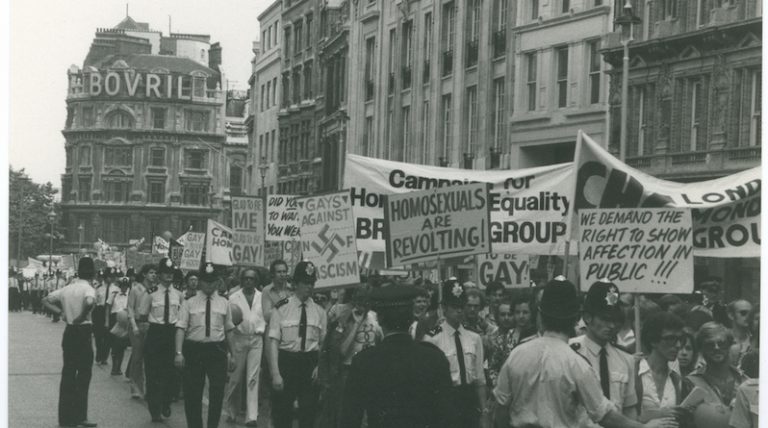What is my gender identity?
Gender identity is your personal sense of your own gender – there’s lots of different terms, so let’s explore them together
Gender identity is how you might describe your gender and reflects how you feel about who you are. It relates to your sense of self and how you feel in your head, rather than anything physical. This means that your gender identity is different from your biological sex, which is related to your reproductive organs and secondary sex characteristics (like hormones). As gender identity and sex are separate things, this means that, for some people, they don’t ‘match up’ in the rigid way society often expects.
We’ve launched our transformative content series: “Am I trans?” Translating sex, identity & relationships, supporting trans+ and non-binary young people to access sex and relationships education that is relevant to their experiences and needs. Discover the full series here.
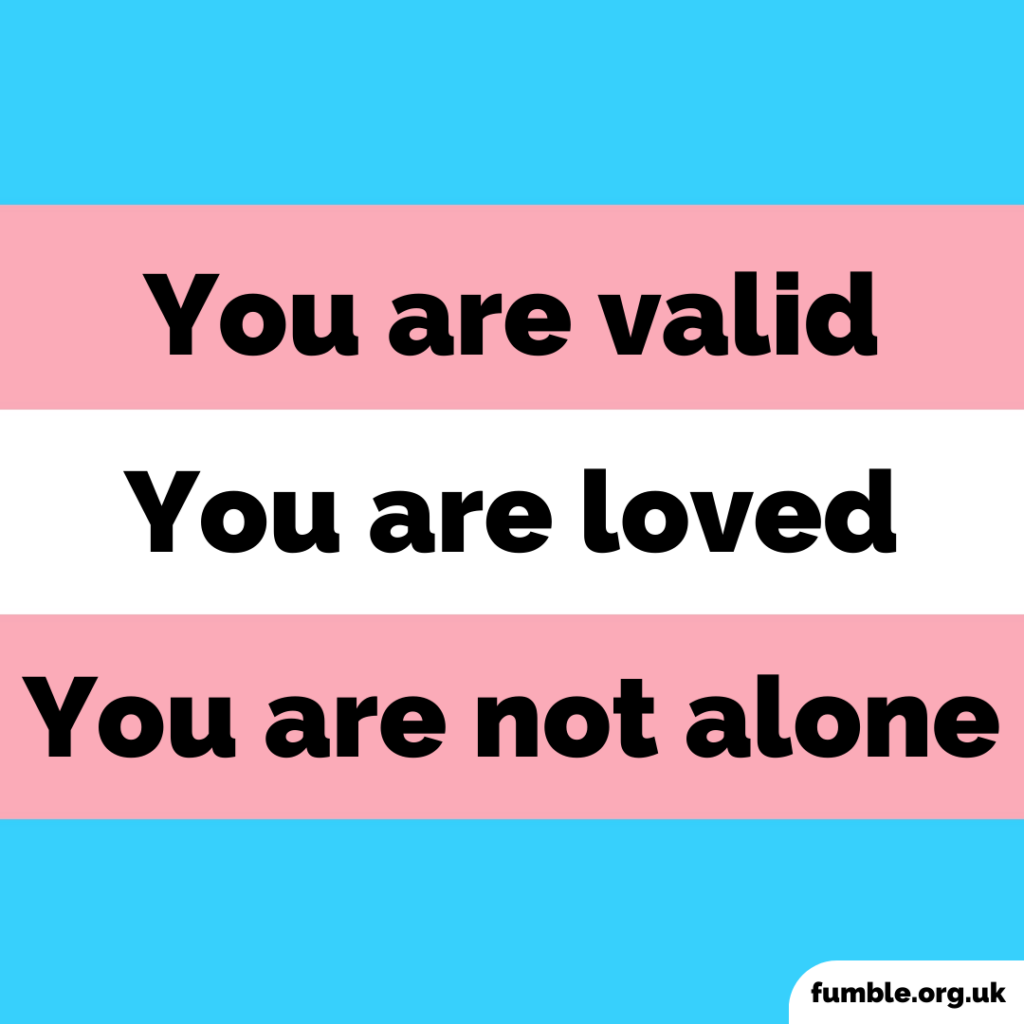
What does cisgender and transgender mean?
A cisgender person is someone who feels that the gender they were assigned when they were born (based on their biological sex) matches their gender identity. Transgender people often feel their gender identity doesn’t match up with what they were assigned at birth. Trans is an umbrella term that can include non-binary and genderqueer people, as well as trans people transitioning female-to-male or male-to-female.
Non-binary or genderqueer people may feel as though they don’t fit into either of the binary genders, male or female. They could instead identify as all genders, none at all or anywhere else on the wider gender spectrum. Gender is a fluid thing and can change – for some people this could be everyday or over the course of their lifetime. Some people may always identify as the gender they were assigned at birth and some may realise they don’t. There’s always plenty of time to explore and think about your gender.
What is gender dysphoria?
Gender dysphoria is different for everyone, but for many trans people it means they feel uncomfortable in their bodies or with how other people may perceive them. They may feel that, due to their biological sex and the gender they were assigned at birth, they aren’t viewed or treated as the gender they identify as. Some trans people choose to medically transition (for example, having hormone therapy or surgery), which can enable them to feel more ‘right’ and comfortable in their body. It’s worth noting that not all trans people experience dysphoria, not all trans people want to medically transition, and that you don’t need to feel dysphoric to be transgender.
What is gender expression?
Everyone has their own gender expression, including transgender and cisgender people. You can convey your gender identity by expressing yourself as you choose. For example, through your dress, tone, mannerisms, or actions. It’s just a way of communicating your gender to the outside world. Some trans people process their gender dysphoria by altering their gender expression, but this isn’t true for all trans people.
Is gender identity the same as sexuality?
It can sometimes be confusing when thinking about your gender identity and sexuality. They’re different, and yet sometimes it can feel like they relate to one another? Let’s break it down.
Your sexuality is who you’re attracted to, both romantically and/or sexually. Whereas, your gender identity is how you feel about yourself, not your attraction to others. If you’re still a bit confused, we love The Genderbread Person for visualising all these different parts of ourselves.
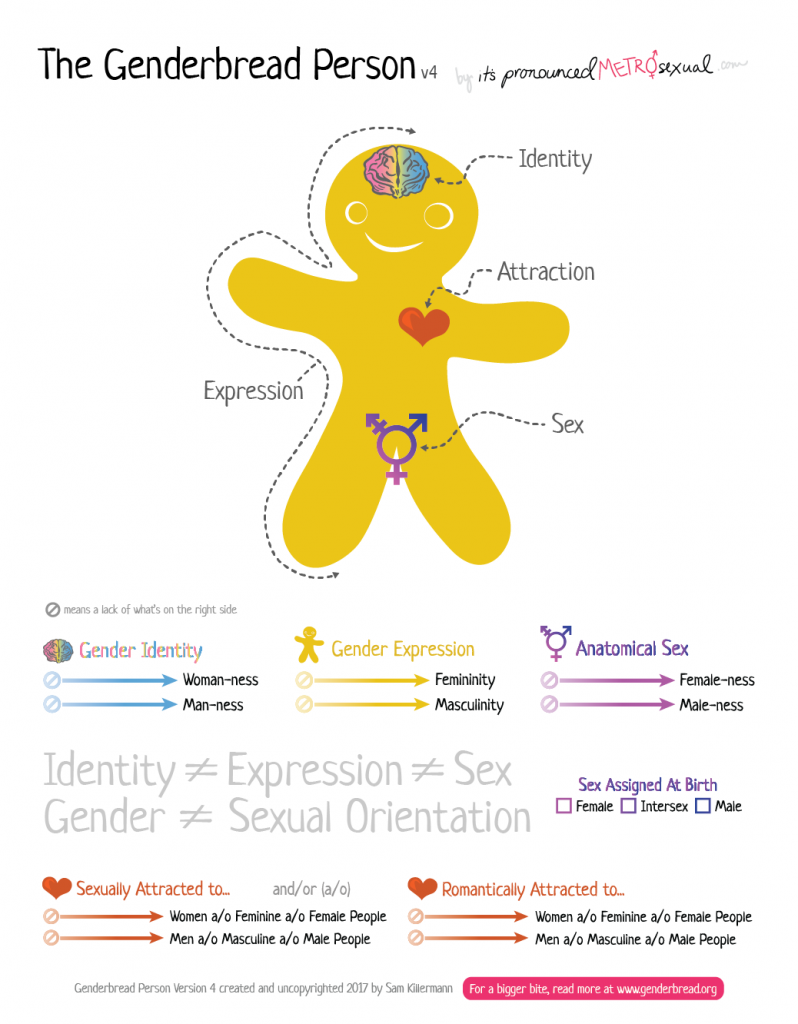
What are pronouns?
Our pronouns can also reflect our gender identity. There are some that are associated with binary genders, such as male (“he/him”) or female (“she/her”), and some that are gender neutral (such as “they/them”). Although there are these associations with gender, we shouldn’t assume someone’s gender. For example, a cis-woman may use both she/they pronouns; or a non-binary person may use she/her pronouns. At Fumble we believe it’s up to the individual to choose their pronouns, no questions asked.
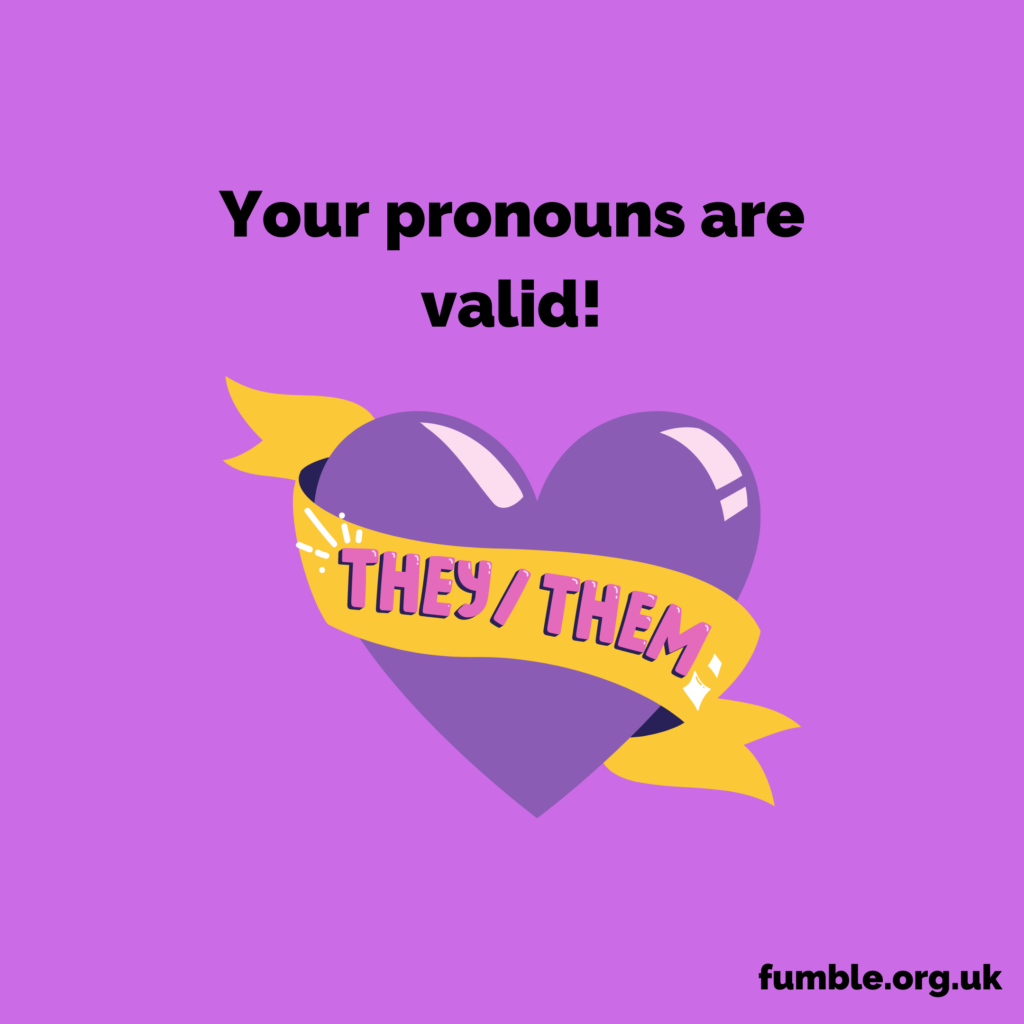
For some people, their gender identity feels clear and really obvious from a young age. But, for others, it can take some time to figure out. If you’re a bit confused, you’re not alone. If you feel uncomfortable about your gender identity, you may want to talk to someone you trust. There’s also lots of advice online that can help you feel more comfortable and talk you through some options of to do next. Remember, your gender identity is for you to decide, and no one else, and there’s no urgency or rush to decide anything.
Other support
- “Am I trans?” Translating sex, identity & relationships: discover the full series here
- What’s the difference between sex and gender?
- Do I have to come out?
- Terrence Higgins Trust – Clinics and resources for trans and non-binary people
- Brook – Gender
- Brook – Find LGBTQ+ support near you
Read more
Last Reviewed 23 August 2023
Image credit: Zackary Drucker via The Gender Spectrum Collection



